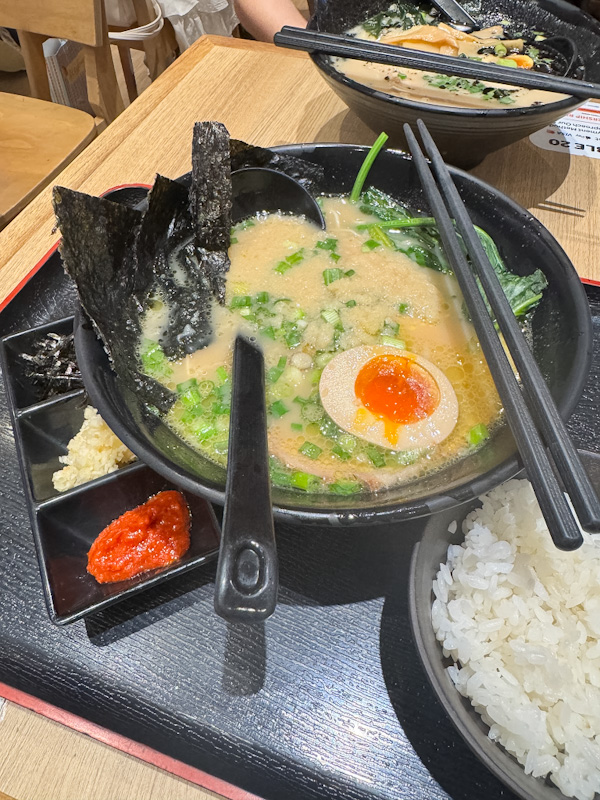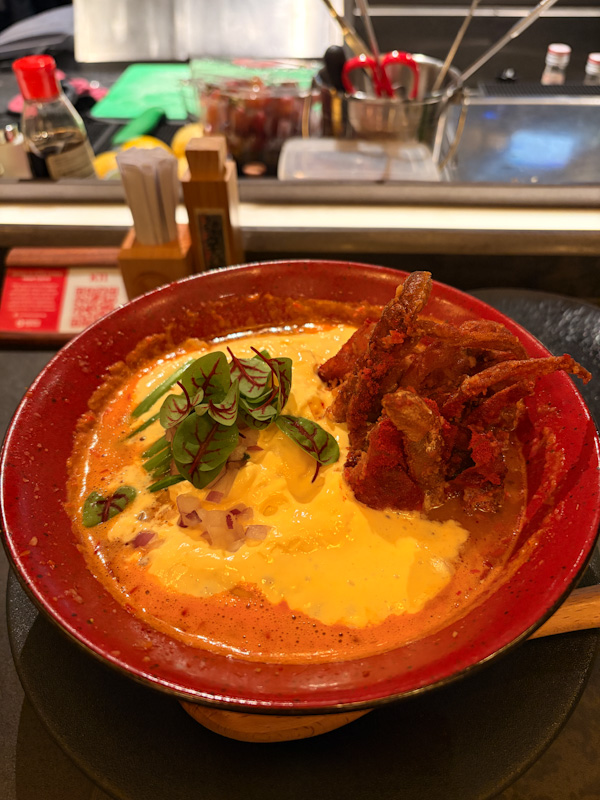WHAT WE ATE
- Mazesoba, 60/100 (18 Sep 2025, MBFC)
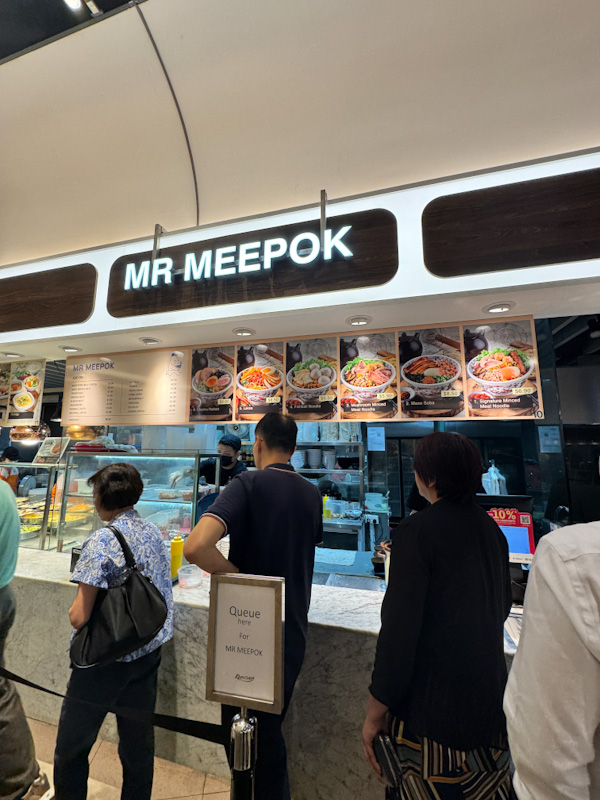
Mr Meepok has been steadily building a name for itself in Singapore’s hawker scene, taking the familiar comfort of mee pok and reworking it with a Japanese twist. Instead of the usual minced pork and fishballs, you find bowls topped with chashu, onsen egg and tare that lean closer to mazesoba than bak chor mee. What makes it interesting is not only the East meets West styling but also how it brings ramen sensibilities into a hawker priced bowl. With new outlets gradually appearing beyond its Clementi beginnings and a presence in the CBD, Mr Meepok seems intent on making its version of mee pok more accessible to everyday diners.
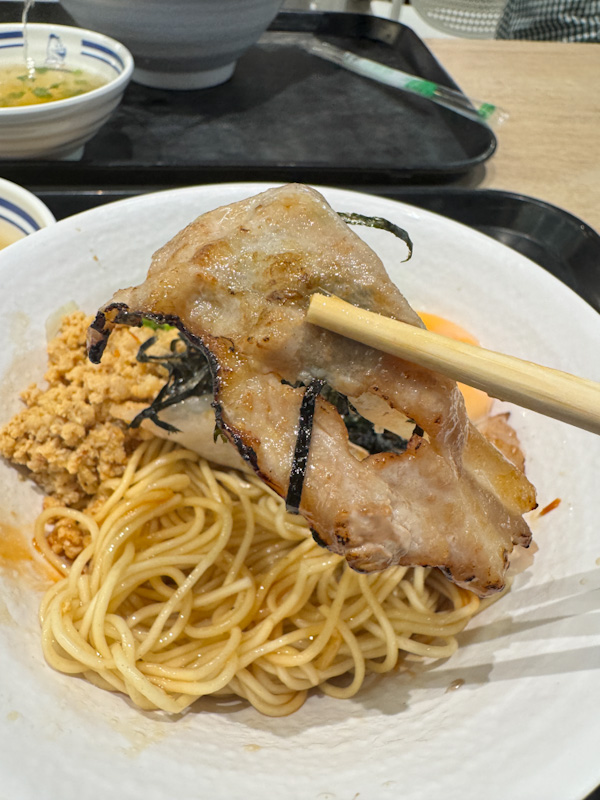
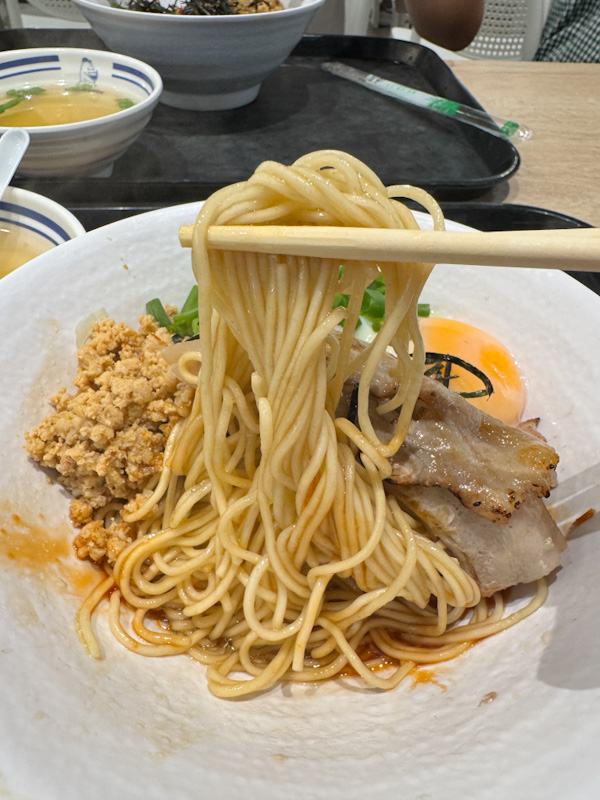
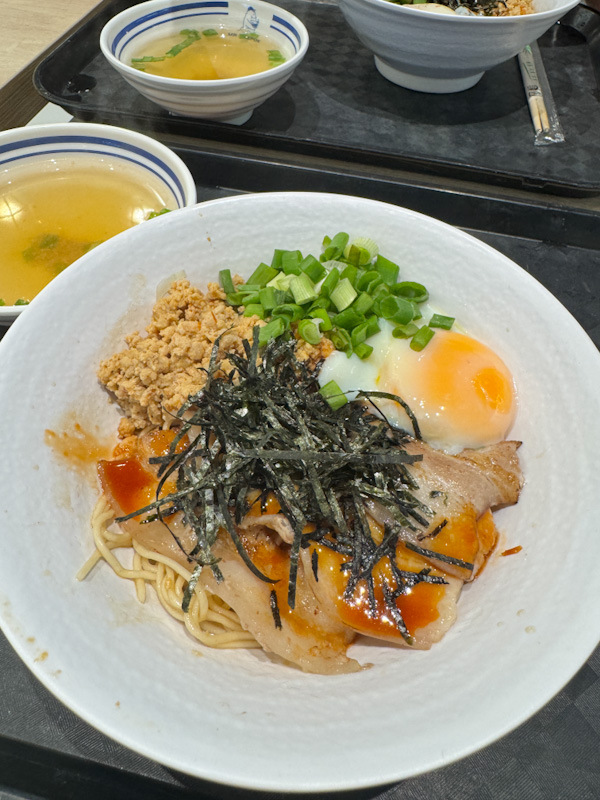
Mazesoba: 60/100
Noodle: 20/35
The noodles here take a rather unexpected turn. Instead of the springy, chewy strands typically found in mazesoba, what lands in the bowl are medium-thin, straight noodles resembling Hakata-style. Being low hydration, they should ideally have bite and snap—but instead they arrive soft and limp. The exterior seems slightly overcooked, carrying a doughy cling that sticks to the teeth. Flavour-wise, the wheat notes come through cleanly with no unpleasant alkaline tang, which is a small consolation. Still, the texture misses the mark for a dish that usually lives and dies by its noodles.
Sauce & Soup: 25/35
This bowl comes paired with both a sauce and a side soup, so it makes sense to review them together.
The tare leans shoyu-based, layered with an onsen egg to create that glossy richness. It opens with a sharp, salty savoury note before softening into a sweet and umami-laden body. As the egg folds in, the sauce rounds off with a creaminess, punctuated by a subtle lingering spice from the marinated minced meat. The layering isn’t complex, but it is coherent—clean arcs of flavour where the sauce knows when to assert and when to recede.
The side soup, however, falls flat. It’s muted, thin, and reminiscent of a meepok broth with faint meaty hints and a diluted sweetness. Against the sauce, it feels like an afterthought—a weak pairing that contributes little to the overall experience.
Meat: 10/20
The protein is split between thinly sliced pork belly chashu and the marinated minced meat.
The chashu carries the look of promise—torched before serving with charred marks to suggest smokiness. Yet the cut, though balanced with lean and fat, underdelivers. The texture leans dry, the fatty sections rubbery and resistant, and the flavour lingers meaty but not in a particularly pleasant way. Some pieces even carry a slight boar taint. The aburi aesthetic is visual theatre without the depth of flavour or smokiness to back it up.
In contrast, the minced meat is the saving grace—chewy-tender, moist, savoury with a prickle of spice. It provides contrast and relief, anchoring this section when the chashu does not.
Other Toppings: 5/10
The onsen egg, folded into the noodles, acts as both topping and sauce component—executed well with a runny yolk that enriches the base. Negi brings freshness, its piquant crunch cutting through the richness. A generous mound of shredded seaweed binds to the noodles, giving both texture and flavour reinforcement. Competent, but not enough to elevate the bowl further.
Summary
The mazesoba misses the mark largely because of its noodles. Instead of the chewy, mochi-mochi strands typical of the style, the bowl uses thin Hakata-like noodles that turned out limp and doughy, despite having a good wheat flavour. The sauce, a shoyu-based tare with onsen egg and spiced minced meat, is the strongest element — clean, well-layered and satisfying — though the bland side soup added little. Protein was inconsistent: the pork belly chashu looked promising but ate tough and carried hints of boar taint, while the minced meat was tender, savoury and spicy enough to save the section. Toppings like egg, negi and seaweed were competently done but not remarkable. Overall, a bowl with flashes of thought but uneven execution.
DISCLAIMER
One man’s meat is another man’s poison.
Find out more about our palettes and how we evaluate our ramen here. 😉

